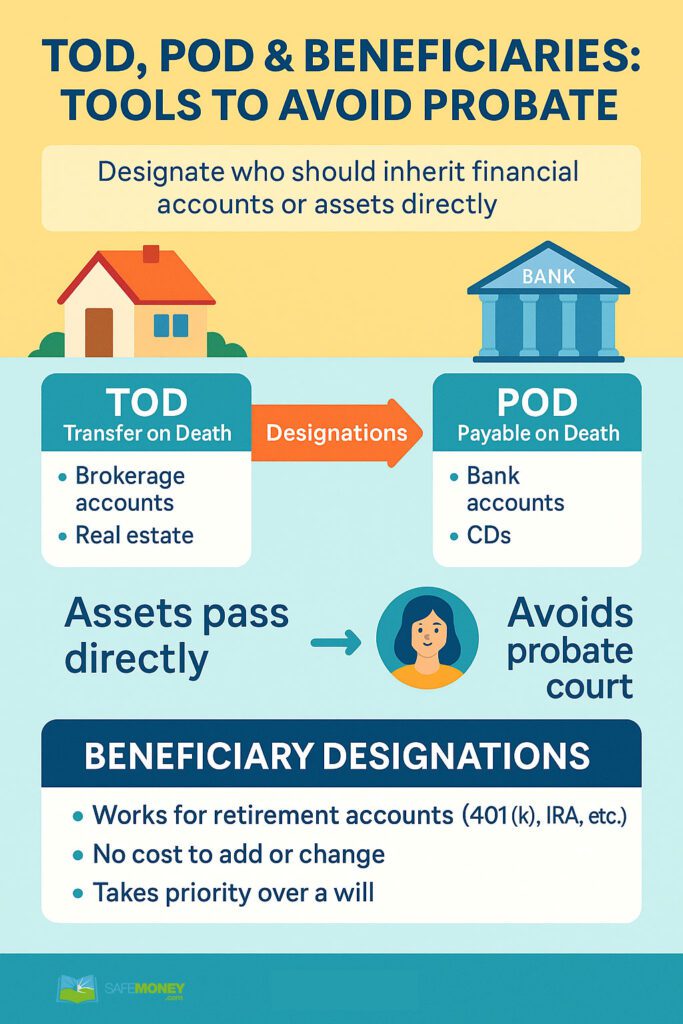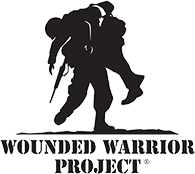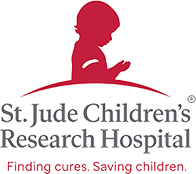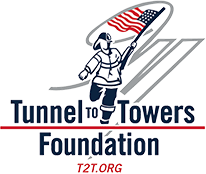TOD, POD & Beneficiaries: Tools to Avoid Probate

You’ve created a will. You might even have a trust. But if you want to keep your estate out of court and make life easier for your family, there’s one more set of tools you need to know about:
Transfer on Death (TOD) and Payable on Death (POD) designations.
These powerful (and often free) tools help you pass property, money, and investments directly to your loved ones—without the delays or costs of probate. And during Make-a-Will Month, they’re an essential part of completing your legacy plan.
What Are TOD and POD Accounts?
TOD and POD are simple legal instructions you can add to certain financial accounts or assets. They tell your financial institution who should receive the asset when you pass away.
TOD – Transfer on Death
Used for:
- Stocks
- Bonds
- Brokerage and investment accounts
- Real estate (in some states)
POD – Payable on Death
Used for:
- Bank accounts (checking, savings, CDs)
- Credit union accounts
- Money market accounts
How TOD and POD Designations Work
Let’s say you have a brokerage account worth $100,000 and you name your daughter as the TOD beneficiary. When you pass away, that account automatically transfers to her—without court involvement.
The same applies for a POD bank account. If your son is listed as the POD recipient on your savings account, the bank will release the funds to him directly.
📌 These designations bypass your will and go directly to the person named on file. No probate, no delay, no extra fees.
What Happens Without TOD or POD?
Without these designations:
-
- The asset becomes part of your probate estate
- Your family must wait for the court to authorize the transfer
- Legal fees and delays can reduce what your loved ones receive

Do TOD and POD Replace a Will or Trust?
No—but they complement your will or trust.
Your will outlines how to divide your probate assets. Your trust can help manage more complex situations like blended families, ongoing care needs, or property in multiple states.
TOD and POD designations are best for accounts that don’t need complicated instructions—just a clear, direct transfer to someone you trust.
Benefits of Using TOD and POD
- Avoid probate on designated accounts
- Fast access to funds for your loved ones
- No legal cost to set up in most cases
- Flexibility to change beneficiaries at any time
- Privacy—these transfers don’t become part of the public court record
Common Mistakes to Avoid
- Forgetting to name a contingent beneficiary. If your primary beneficiary passes away and no backup is listed, the asset goes to probate.
- Outdated designations. Life changes (like divorce, death, or estrangement) can create unintended transfers.
- Not coordinating with your will or trust. Your estate documents and beneficiary designations must align to avoid conflict.
- Assuming your spouse is automatically included. Some accounts won’t transfer unless a spouse is officially listed.
Real-Life Example: A Simple Move, Big Savings
George, a retiree, had three accounts—two bank accounts and one brokerage account. He added POD and TOD designations to all three, naming his two children as beneficiaries.
When George passed away, his children accessed those funds in a matter of weeks—with no court, no probate, and no attorney fees. That simple paperwork saved thousands of dollars and months of legal stress.
Quick Comparison Chart
| Tool | Use For | Avoids Probate? | Cost to Set Up |
|---|---|---|---|
| Transfer on Death (TOD) | Investment & brokerage accounts | Yes | Usually free |
| Payable on Death (POD) | Bank accounts, CDs | Yes | Usually free |
| Will | All probate assets | No | Varies (legal fees) |
| Living Trust | Most major assets | Yes (if funded) | Moderate to high upfront |
Action Steps
- Check your accounts. Ask your bank and brokerage firms if you have POD/TOD options in place.
- Add or update beneficiaries. Include both primary and contingent recipients.
- Coordinate your designations with your will and trust to avoid conflicts.
- Review annually. Life changes should always trigger a review of your designations.
💬 Ask Yourself: Have I made it easy for my family to receive what I leave behind—or will they have to go through court?
If you’re not sure, TOD and POD designations are a great place to start.
Legacy Planning Is All About Simplicity
These simple forms could make the difference between a smooth transition and a legal headache. Combined with your will or trust, TOD and POD designations are some of the easiest and most powerful estate tools you can use.
🔜 Coming Up Next:
Our next article reveals what can go wrong with DIY wills and estate plans—and why a little professional help can save your family from big problems later.
🧑💼 Written by Brent Meyer, founder of SafeMoney.com. With more than 20 years of hands-on experience in annuities and retirement planning, Brent is committed to helping Americans make informed, confident financial decisions.
Disclaimer: This article is for educational purposes only and should not be considered legal or financial advice. Please consult a qualified professional to discuss your specific needs and circumstances.








